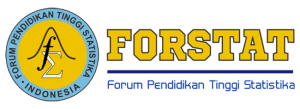Digital Divide and A Spatial Investigation of Convergence in ICT Development Across Provinces in Indonesia
DOI:
https://doi.org/10.34123/jurnalasks.v14i1.388Abstract
In the digital era, technology plays a much bigger role all over the world including in Indonesia. In fact, Indonesia’s ICT Development Index (IDI) has improved over time. However, it is noticeable that disparities among regions in regards to ICT development are still wide resulting in digital divide. This paper aims to examine the convergence of regions with regard to ICT development and analyze the key factors which drive the convergence process using annual data from 2015 to 2019. Spatial panel regression method is used to test for absolute and conditional beta convergence. The results reveal that there is evidence for the existence of absolute and conditional convergence in regards to ICT development in Indonesia. Regarding conditional convergence, the convergence process takes a shorter time to reach half-time convergence by taking into account several control variables consisting of output in ICT sector, FDI, and government allocation on education. In addition, the significant spatial correlation among provinces shows that the growth of neighboring provinces’ ICT development also contributes to the convergence process. This finding implies that the digital divide has declined and the factors mentioned above are important instruments to help bridge the digital divide.
Downloads
References
[2] The Ministry of National Development Planning of Indonesia 2019 Rencana Pembangunan Jangka Menengah Nasional 2020-2024 (Jakarta: The Ministry of National Development Planning of Indonesia)
[3] Central Bank of Indonesia 2021 Jumlah Transaksi Uang Elektronik Beredar (Jakarta: Central Bank of Indonesia)
[4] Statistics Indonesia 2020 Indeks Pembangunan Teknologi Informasi dan Komunikasi 2019 (Jakarta: Statistics Indonesia)
[5] Organisation for Economic Co-operation and Development (OECD) 2001 Understanding the Digital Divide (Paris: OECD Publications)
[6] Indonesian Internet Service Providers Association 2015 Profil Pengguna Internet Indonesia 2014 (Jakarta: Indonesian Internet Service Providers Association)
[7] Kathuria V and Oh K Y 2018 ICT Access: Testing for Convergence Across Countries Information Society 34 166–182
[8] Tobler W R 1970 A Computer Movie Simulating Urban Growth in the Detroit Region Econ Geogr 46 234–240
[9] Bonaccorsi A, Piscitello L, and Rossi L C 2005 The ICT Diffusion: A Spatial Econometric Approach. Available at SSRN: https://ssrn.com/abstract=666848
[10] Sarkar A, Pick J B, and Johnson J 2015 Africa’s Digital Divide: Geography, Policy, and Implications 2015 Regional Conference of the International Telecommunications Society (ITS): "The Intelligent World: Realizing Hopes, Overcoming Challenges" (Los Angeles: International Telecommunications Society) pp 1-33
[11] Pick J and Sarkar A 2016 Theories of the Digital Divide: Critical Comparison 49th Hawaii International Confrence on System Sciences (Koloa: IEEE) pp 3888-3897
[12] Park S R, Choi D Y, and Hong P 2015 Club Convergence and Factors of Digital Divide Across Countries Technol Forecast Soc Change 96 92–100
[13] Rath B N 2016 Does the Digital Divide Across Countries Lead to Convergence? New International Evidence Econ Model 58 75–82
[14] Hadiyat Y D 2014 Kesenjangan Digital di Indonesia (Studi Kasus di Kabupaten Wakatobi) Pekommas 17 81–90
[15] Pick J and Azari R 2008 Global Digital Divide: Influence of Socioeconomic, Governmental, and Accessibility Factors on Information Technology Inf Technol Dev 14 91–115
[16] Rogers E M 1962 Diffusion of Innovations (New York: Free Press)
[17] van Dijk J 2005 The Deepening Divide: Inequality in the Information Society (London: Sage Publications)
[18] Warf B 2013 Global Geographies of the Internet (Heidelberg: Springer Netherlands)
[19] Solow R M 1956 A Contribution to the Theory of Economic Growth Quartely J Econ 70 65-94
[20] Mankiw G 2016 Macroeconomics: 9th Edition (New York: Worth Publishers)
[21] Barro R J and Sala-i-Martin X 1992 Convergence J Polit Econ 100 223–251
[22] Barro R J and Sala-i-Martin X 2004 Economic Growth (Cambridge: the MIT Press)
[23] Villaverde J and Maza A 2009 Measurement of Regional Economic Disparities (Bruges: UNU Institute on Comparative Regional Integration Studies)
[24] Fischer M M and Wang J 2011 Spatial Data Analysis: Models, Methods and Techniques (Berlin: Springer-Verlag Berlin Heidelberg)
[25] Lee L F and Yu J 2012 Spatial Panels: Random Components Versus Fixed Effects Int Econ Rev 53 1369–1412
[26] Elhorst J P 2014 Spatial Econometrics: from Cross-Sectional Data to Spatial Panels (Berlin: Springer-Verlag Berlin Heidelberg)
[27] Millo G and Piras G 2012 SPLM: Spatial Panel Data Models in R. J Stat Softw 47 1-38
[28] Shapiro S S and Wilk M B 1965 An Analysis of Variance Test for Normality (Complete Samples) Biometrika 52 591
[29] Glejser H 1969 A New Test for Heteroskedasticity J Am Stat Assoc 64 316–323
[30] Gujarati D N 2008 Basic Econometrics (New York: McGraw-Hill Higher Education)
[31] Sujarwoto S and Tampubolon G 2016 Spatial Inequality and the Internet Divide in Indonesia 2010 Telecomm Policy 40 602–616
[32] Ariyanti S 2013 Study of Digital Divide Measurement in Indonesia Bul Pos dan Telekomun 11 281–292
[33] García-Muñiz A S and Vicente M R 2014 ICT Technologies in Europe: A Study of Technological Diffusion and Economic Growth Under Network Theory Telecomm Policy 38 360–370
[34] Varoudakis A and Rossotto C M 2004 Regulatory Reform and Performance in Telecommunications: Unrealized Potential in the MENA Countries Telecomm Policy 28
59–78
[35] Kyobe M 2011 Investigating the Key Factors Influencing ICT Adoption in South Africa J Syst Inf Technol 13 255–267
[36] Yartey C A 2008 Financial Development, the Structure of Capital Markets, and the Global Digital Divide Inf Econ Policy 20 208–227
[37] Borjas G J 2013 Labor Economics: Sixth Edition (New York: McGraw-Hill Irwin)
[38] Mubarak F, Suomi R and Kantola S P 2020 Confirming the Links Between Socio-economic Variables and Digitalization Worldwide: the Unsettled Debate on Digital Divide J Information, Commun Ethics Soc 18 415–430
[39] Roos L and Jordaan A C 2006 Access to Information and Communication: Estimating the Determinants of Internet Usage in South Africa Commun J Commun Sci South Africa 25
1–22
[40] Robinson J, DiMaggio P, and Hargittai E 2003 New Social Survey Perspectives on the Digital Divide IT Soc 1 1–22
[41] Subiakto H 2013 Internet untuk Pedesaan dan Pemanfaatannya Bagi Masyarakat Masyarakat, Kebud dan Polit 26 243–256
















